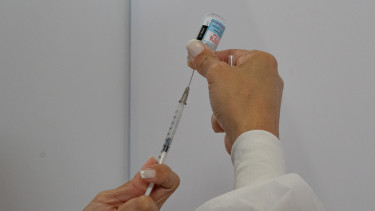Respiratory infections pick up in Hungary after temporary relief

On the 45th week of 2024 (4-10 November), 160,000 people turned to the doctor with acute respiratory infections, including 18,300 people with flu-like symptoms, according to data released by the National Centre for Public Health and Pharmacy (NNGYK) on Thursday. The above figures mark a 30% and a 36% jump from the 44th week, respectively.
The sharp increase has to do not only with the worsening epidemiological situation, but also with the fact that both the 43rd and 44th weeks had only four working days due to national holidays.
A short-term comparison (for the last three seasons of respiratory illnesses) shows that the number of patients with ARI was lower than in the previous two respiratory seasons, while the number of people seeking medical help with flu-like symptoms remains higher than in the previous two seasons.

The share of flu-like symptoms in ARI edged up to 11.4% on the 45th week from 11.0% on the 44th week, but all of the weekly ratios were the highest ratios in the past three seasons.

We also have data for ARIs and flu-like symptoms per 100,000 population, although a long-term data series is available only for the latter.
in terms of ari, the situation is better than in the previous two respiratory seasons, while in terms of flu-like symptoms this season is worse than any of the past 14 seasons.


A total of 330 samples were tested on the 45th week (up from 218 a week earlier), of which 42 came back COVID-19 positive (up from 37), i.e. they detected coronavirus in 12.7% of the samples, which compares with 24.3% a year ago, although at that time only 272 samples were tested, of which 66 showed the presence of SARS-CoV-2. (The 44th week last year was also a shorter one due to All Saints' Day.)


126 people with severe acute respiratory infection (SARI) were hospitalised on the 45th week, of whom 13 (or 10.3%) required intensive care. The respective figures for the 45th week of 2023 were 158 people in hospital, and 15 (9.5%) in ICUs.

Further breakdown shows that 37 people (29.4% of SARI patients) were hospitalised with coronavirus infection, down from 51 a week ago and fewer than 113 (71.5%) a year ago.

Of the 126 people in hospital with SARI, 20 (15.9%) were aged two or younger, while 57 (45.2%) were 60 and above.

Also, 33 (89%) of the 37 COVID-19 patients were over 60 years of age.
A year ago, of the 158 people in hospital with SARI, 23 (15.6%) were aged two or younger, while 107 (67.7%) were 60 or older. Also, 93 (82%) of the 113 COVID-19 patients were over 60 years of age.

The age breakdown of people seeking medical help with ARI and flu-like symptoms are shown below.
The majority of ARI patients belonged in the 0-14 age group throughout the 'flu season' last year, while the share of people going to the doctor with flu-like symptoms was the highest in the 15-34 age group up to the 2nd week of this year when the youngest were in majority until the 40th week bar a couple of weeks towards the end. You fund a heat map in our previous article here.


Pertussis peter out
We have whooping cough statistics only up to the 44th week but these show that the pertussis season is winding down, with only 33 cases reported for the 28 Oct-3 Nov week.

The total number of cases rose to 1,090, which is a record. Well, look at this chart.

This is how the epidemic went down this year:

Portfolio has previously reported in several articles that the most vulnerable group is infants. They were also the group with the highest incidence on the 44th week. In the first 44 weeks of this year, 242 of all suspected cases, practically one in four, were infants, but the prevalence in the 40-49 age group is also rather high. If we look at a wider age group of children between 0 and 14 years of age, they make up 43.3% of all cases this year (472 in total), while up to 19 years the share is 52.5% (572 cases).

Cover photo (for illustration purposes only): Getty Images







